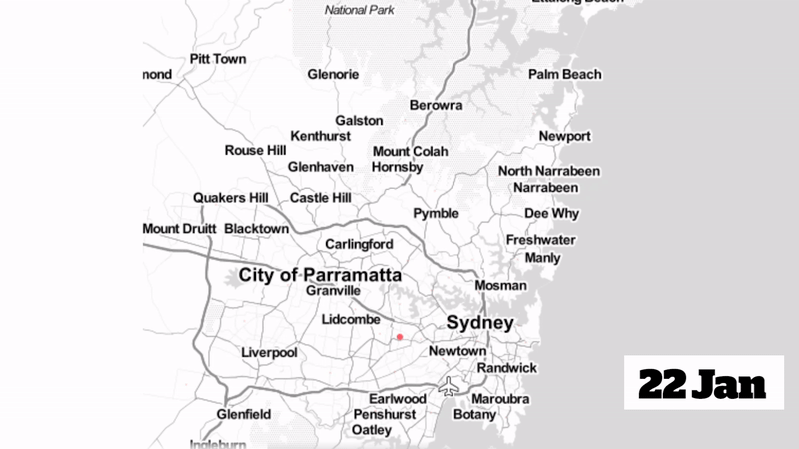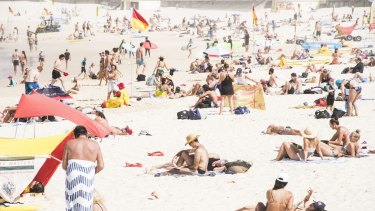New data reveals the devastating march of COVID-19 across NSW, showing the date and postcode of every case recorded for the first time.
NSW Health recorded its first case of the virus on January 22. It was a Burwood resident who had returned to Sydney from Wuhan.
The spread of COVID-19 across Sydney since the first cases in January. Credit:Taylor Denny
Following that case, the virus spread through Sydney and beyond, with cases confirmed along the NSW coast and in regional areas over the next two months.
The Herald analysis shows that postcodes along the eastern beaches and northern suburbs are home to the most infected residents.
Bondi has three times more cases than anywhere else in the state, with 86 people confirmed to have had coronavirus as of March 29, with 31 new cases recorded in the past week. Mosman has the second-most infections with 28 people confirmed to have contracted the virus, followed by Bellevue Hill (27 cases) and Bondi Junction with 26.
New cases are also increasing in western Sydney with Blacktown recording 13 of its total 17 cases in the past week.
Dean of Health Sciences at Swinburne University Bruce Thompson said a similar pattern of spread had occurred in Victoria, with wealthy suburbs including Toorak and the Mornington Peninsula containing some of the state's biggest clusters.
Crowds at Bondi Beach on March 21.Credit:Steven Siewert
"It's an interesting pattern that's unravelling, we don't have a lot of data on why that's occurring yet, so whether it could be perceived as complacency or arrogance, we'll find out," Professor Thompson said.
He said the spread of the virus to regional areas was concerning and that the health system in those areas was already stretched.
Professor Thompson said the spread across the state highlights the need to be "rigorous about isolation", and that outbreaks would only stop once the virus had no one "to latch on to".
Virologist Professor Peter White from UNSW said policing lockdowns in the areas with the biggest outbreaks was a possible strategy for containing the spread.
"You can do lockdowns on different levels so if you think of every state as a different country we've got internal state lockdowns as well and you could lock down individual cities if there's a bad outbreak," he said. "It would get too confusing if you start locking down sections of the city but you could put more police in areas where there are clusters to make sure people are doing the right thing."
The NSW government announced on Tuesday that a six-month prison sentence or fines up to $11,000 could be handed to people leaving their home without a "reasonable" excuse.
Hassan Vally, an epidemiologist and senior lecturer in public health at La Trobe University, said that the virus would likely continue to spread in clusters.
"This is not an unexpected pattern for a disease like COVID-19 that is spread person-to-person," Associate Professor Vally said.
"What you are likely to be seeing here are infected individuals in various locations seeding local clusters."
The Boogie Wonderland Party in Bondi remains Sydney's largest active cluster with 30 associated cases as at March 29.
Source: Read Full Article

